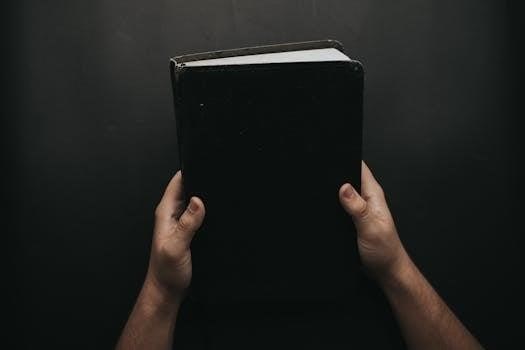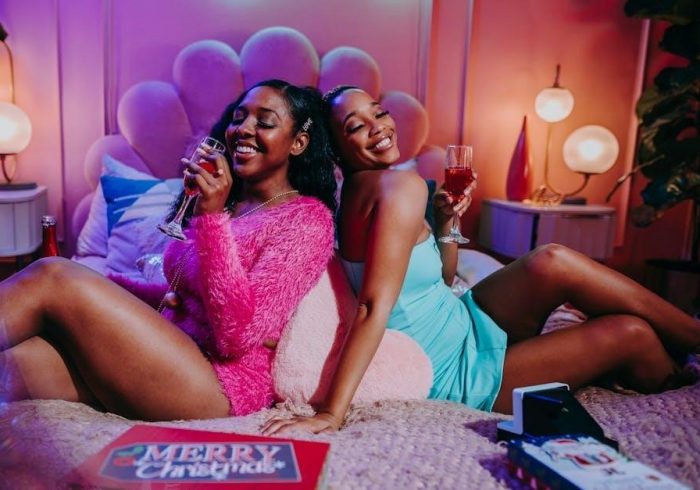The Bible Code, also known as the Torah code, is a purported set of encoded words within the Hebrew text, believed to predict significant events. It’s an idea that hidden messages validate the Bible’s divine authorship and provide insights into the future.
What is the Bible Code?
The Bible Code, often called the Torah Code, posits that hidden messages are embedded within the Hebrew text of the Old Testament. These messages are thought to be prophetic, revealing events that occurred long after the Bible was written. Proponents suggest that these encoded words, when deciphered, validate the divine origin of the scriptures. This concept is based on the idea that information was deliberately concealed using mathematical patterns. The code is believed to offer insight into not only past events but also the future. The process involves using computer analysis to uncover these hidden sequences, often by looking for equidistant letter sequences. This is not a traditional interpretation of the text, but instead a search for mathematically encoded messages. It’s a controversial idea, with many arguing for and against its validity.

The Discovery of the Bible Code
The concept of a hidden code within the Bible gained prominence through the work of Michael Drosnin and his book “The Bible Code”. This book popularized the idea of encoded messages.
Michael Drosnin’s “The Bible Code”
Michael Drosnin’s 1997 book, “The Bible Code,” brought the concept into mainstream attention. Drosnin claimed to have discovered hidden messages within the Hebrew Bible using computer analysis. He asserted that these codes predicted historical events, even those that occurred thousands of years after the Bible was written. Drosnin’s work focused on the idea that equidistant letter sequences (ELS) in the biblical text revealed messages about the future. His book presented these findings in a narrative format, connecting the alleged encoded messages with real-world events, like the assassination of Yitzhak Rabin. It was a controversial work, sparking both fascination and intense criticism for its interpretations and methodology.
Eliyahu Rips and the Mathematical Basis
The mathematical underpinnings of the Bible Code are largely attributed to the work of Eliyahu Rips, an Israeli mathematician. Rips, along with Doron Witztum and Yoav Rosenberg, conducted research exploring equidistant letter sequences (ELS) in the Book of Genesis. They published a paper on their findings, which was later cited by Michael Drosnin. Rips’s work involved using computer programs to search the Hebrew text for words and phrases at fixed intervals. The premise was that statistically significant patterns of related words could be found in close proximity, providing evidence for a hidden code. This formed the basis for the claims made about the Bible’s predictive abilities.
How the Bible Code Works
The Bible Code operates by identifying equidistant letter sequences (ELS) in the Hebrew text. Computers analyze the text, searching for patterns and words at fixed intervals. This process reveals hidden messages, proponents claim.
Equidistant Letter Sequences (ELS)
Equidistant Letter Sequences (ELS) are the core of the Bible Code. This method involves selecting a starting letter in the Hebrew text and then skipping a fixed number of letters to find the next, and so on. The resulting sequence of letters may form words or phrases, believed to hold hidden meanings. The Bible code is thought to lay out the Hebrew text of the Bible in block form, like a crossword. These coded messages are laid out horizontally, vertically, or diagonally, often crossing each other, forming patterns that proponents interpret as significant. This approach is used to discover words or phrases that seemingly reveal prophetic messages or historical information.
Computer Analysis of the Hebrew Text
The Bible Code’s analysis relies heavily on computer programs due to the complexity of searching for Equidistant Letter Sequences. These programs scan the Hebrew text of the Bible, which is traditionally written without vowels or spaces, looking for patterns. Computers are essential to process large amounts of data and identify potential ELS words and phrases. These computer programs analyze the Bible’s text in block form, like a crossword puzzle, to find hidden messages. They search for codes laid out in various directions⁚ horizontally, vertically, and diagonally, often with sequences intersecting one another. This allows researchers to quickly find and analyze possible encoded messages.

Claims and Predictions of the Bible Code
Proponents claim the Bible Code predicts historical events like World War II, the moon landing, and the assassination of Yitzhak Rabin. They also suggest the code holds future prophecies yet to unfold.
Historical Events Predicted
The Bible Code, as popularized by Michael Drosnin, claims to have predicted numerous significant historical events long after the Bible was written. These supposed predictions range from major global conflicts to pivotal moments in political history. One of the most frequently cited examples is the alleged prediction of World War II, including the rise of Nazi Germany and the Holocaust. The code is also said to have foreseen the moon landing in 1969, the Watergate scandal, and both of the Kennedy assassinations. Furthermore, some proponents assert the code accurately foretold the election of Bill Clinton and the Oklahoma City bombing. Perhaps the most controversial claim is the prediction of the assassination of Israeli Prime Minister Yitzhak Rabin, with the code allegedly containing the phrase “assassin will assassinate” crossing the name “Yitzhak Rabin”. These claims have fueled much debate and fascination, particularly within popular culture.
Future Prophecies
Beyond purported historical predictions, the Bible Code also claims to unveil prophecies about future events, particularly those concerning Israel and the end times. Proponents suggest the code contains insights into potential conflicts and political shifts, especially those impacting the Middle East. These future prophecies often evoke a sense of urgency and anticipation, driving further speculation and interest. Some interpreters see coded messages hinting at cataclysmic events that will reshape the world order. These supposed future predictions vary widely, with some focusing on specific geopolitical scenarios, while others lean towards broader, more apocalyptic themes. The interpretation of these potential future events remains highly subjective, with different readers drawing varied conclusions from the alleged coded messages. These future-related claims often add a sense of mystery and wonder to the Bible Code, enticing those who seek to uncover hidden meanings.

Criticisms and Skepticism
The Bible Code faces significant criticism from scientists and skeptics, who question its statistical validity and the methodology used to find supposed hidden messages. Alternative explanations are often proposed.
Statistical Arguments Against the Code
A primary criticism against the Bible Code revolves around statistical arguments. Critics argue that the sheer size of the Hebrew text, combined with the flexibility in choosing search parameters like skip distances and word arrangements, makes it inevitable to find seemingly meaningful patterns. They contend that similar patterns can be found in any sufficiently large text, including non-religious works, thereby undermining the code’s unique claim to divine origin. The statistical methods used are also questioned, as the probability of finding such patterns by chance alone is, according to statisticians, far higher than proponents suggest, making any discovered “codes” likely coincidental rather than divinely inspired. These arguments emphasize that the code’s claims are not statistically significant.
Brendan McKay’s Critique
Brendan McKay, an Australian mathematician, has been a prominent critic of the Bible Code. He argues that the patterns found are statistically insignificant and can be replicated in any large text. McKay demonstrated that the same “code” methodology, when applied to other texts like Tolstoy’s “War and Peace,” could produce similar results, including purported prophecies. His critique emphasizes the arbitrary nature of choosing starting points, skip sequences, and word combinations, thus rendering the code’s predictive power meaningless. He also challenged the selection of Hebrew words and their translations used in code research, suggesting that manipulation and cherry-picking of data contribute to biased results, further undermining claims of divine encoding in the Bible.
Alternative Explanations
Alternative explanations for the Bible Code patterns focus on the statistical nature of language and large datasets. The sheer size of the Hebrew Bible, with its many characters, allows for the emergence of apparent patterns purely by chance. The flexibility in choosing starting points, skip sequences, and word combinations greatly increases the likelihood of finding coincidental matches. Furthermore, the human tendency to seek patterns, even when none exist, can lead to the misinterpretation of random occurrences as meaningful codes. This phenomenon, known as apophenia, explains why people find patterns where they are not actually present. The subjective interpretation of extracted words and their purported connections to events can be seen as a form of confirmation bias.

The Bible Code in Popular Culture
The Bible Code has significantly influenced popular culture, notably through Michael Drosnin’s book, which spurred widespread interest. It has also been featured in various media, including documentaries and fictional works.
Books and Media
Michael Drosnin’s “The Bible Code” is a pivotal work, popularizing the concept of hidden messages within the Hebrew Bible. This book, along with its sequels, has significantly contributed to the public’s awareness of the code. Beyond Drosnin’s work, other books and articles explore and critique the Bible Code, presenting varied perspectives. The subject has also found its way into documentaries and films, often portraying the code as a source of mysterious prophecies and hidden knowledge. These media portrayals have further fueled public fascination and debate, solidifying the Bible Code’s place in popular discourse. Additionally, numerous websites and online forums are dedicated to discussing and analyzing the code, contributing to its widespread presence in contemporary culture. These platforms often feature user-generated content, furthering the spread of various interpretations and theories.
on the Bible Code
The Bible Code remains a controversial topic, with debates surrounding its theological and scientific validity. While some see it as proof of divine authorship, others view it as statistically flawed.
Theological Interpretations
Theological interpretations of the Bible Code vary widely, with some proponents viewing it as irrefutable evidence of divine authorship and a testament to the Bible’s inherent complexity. They believe the code demonstrates God’s meticulous planning and preordained knowledge of future events. This perspective often aligns with a literal interpretation of scripture, where the Bible is considered the direct word of God. For many, the code reinforces faith and provides a new lens through which to view biblical texts, seeing hidden layers of meaning beyond the surface narrative. This view emphasizes the Bible as a source of not only historical and moral guidance but also prophetic insights accessible through advanced methods. On the other hand, some theological scholars approach the code with caution, questioning whether such interpretations fit within traditional theological frameworks. They caution against using the code to predict specific events and to avoid overshadowing the Bible’s spiritual and moral messages.
Scientific Validity
The scientific validity of the Bible Code remains highly contested within the scientific community; While proponents like Eliyahu Rips presented their findings in scientific journals, their methodology and conclusions have faced substantial criticism. Statisticians and mathematicians argue that the patterns found in the code can be attributed to chance or data manipulation, rather than a genuine encoded message. Critics point out that similar patterns can be found in other texts, even non-religious ones, when subjected to the same kind of analysis. They also highlight the flexibility in selecting words and sequences, which can lead to subjective interpretations and confirmation bias. The lack of verifiable predictions and the absence of a clear mechanism by which the code could have been embedded further fuel skepticism. Thus, despite the claims of some, the consensus among scientists is that the Bible Code lacks scientific credibility.



